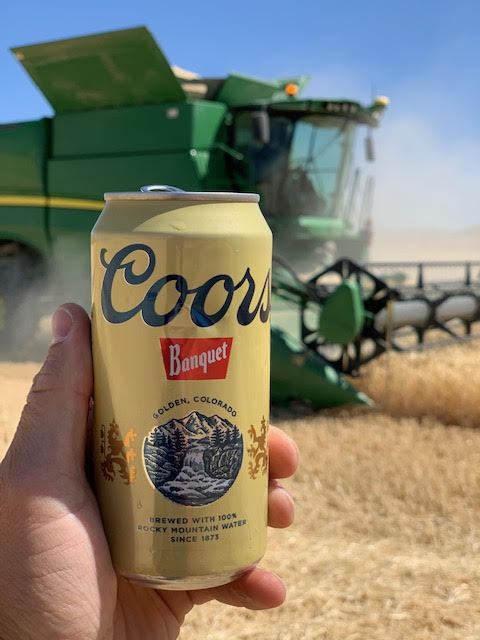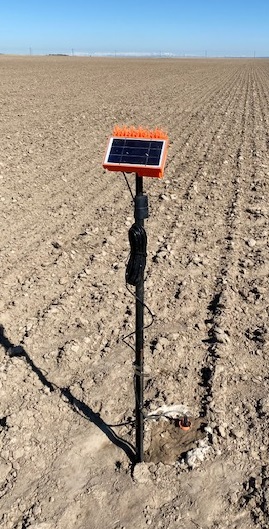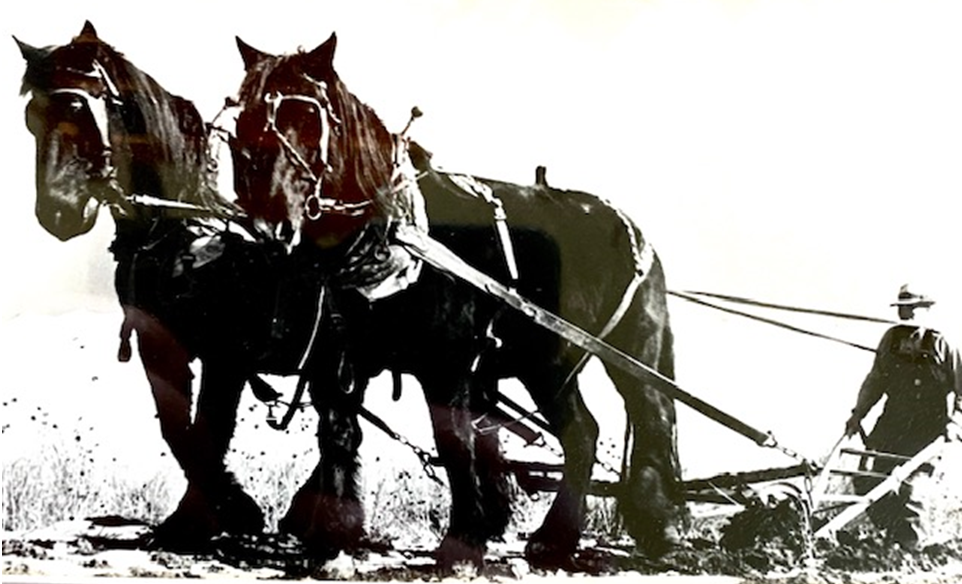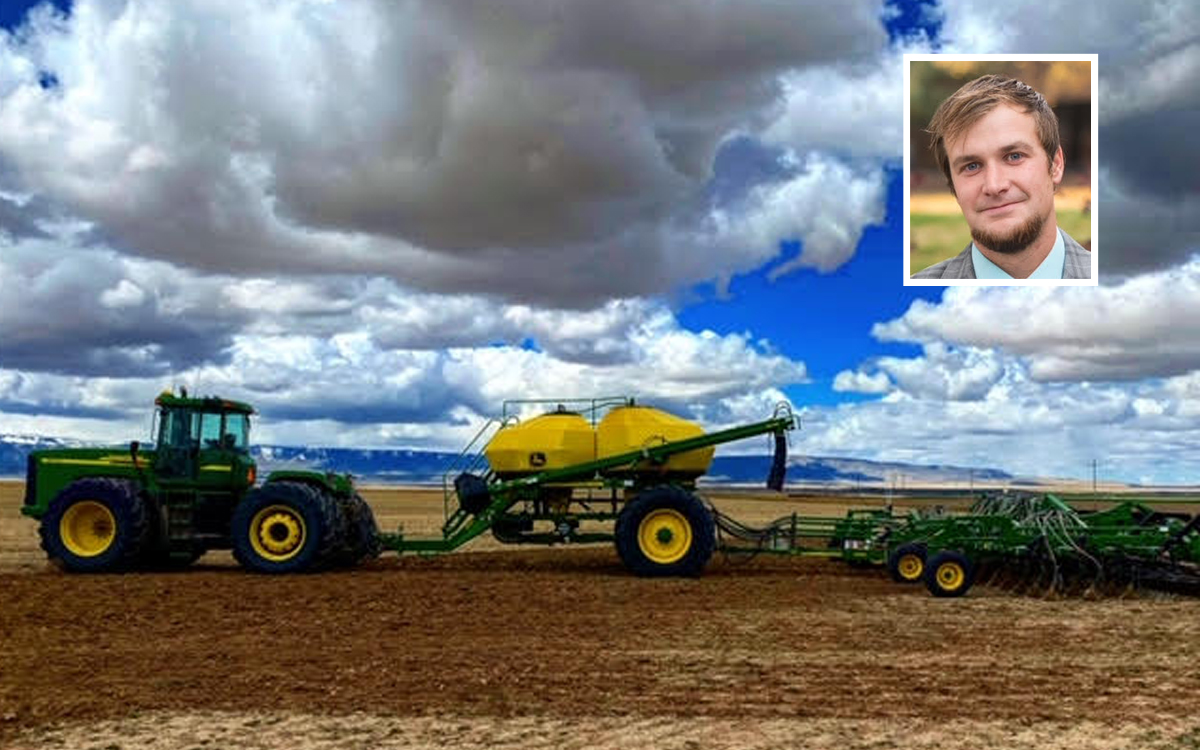Lucas Spratling’s Instagram page is a mosaic of pastel sunsets, endless waves of grain and picturesque mountain views. If you were looking to capture the poetry of the modern American farmer, Spratling has provided the template.
There’s a combine, combing through barley fields. There’s a gnarled fence post tangled with barbed wire. There’s a field of grain with a storm gathering in the distance. Often Spratling’s photos feature a bottle or can of Coors Banquet. It’s his favorite beer, and one with which he has a special bond: He’s been harvesting barley for Molson Coors Beverage Co. since 2009.
Spratling is part of a new generation of farmers who are finding the old ways of agriculture – monocropping, heavy tilling and a reliance on fertilizer and pesticides – are not only inefficient, but can be detrimental to crops and the climate. And while he still uses the farmer’s most trusted tool – his instincts – a trove of data, as well as technology provided by Molson Coors as part of its “Better Barley, Better Beer” program, makes Spratling a model for what barley farming can be.

The grower-direct barley program, established by Bill Coors in the 1940s, aims to help farmers grow stronger crops while reducing their overall environmental footprint. Molson Coors provides a financial incentive to farm more efficiently while also sharing best practices and installing tech on farms, like weather stations and soil probes that measure water density.
“It gives us more access to better science by working with Molson Coors agronomists and having them come to our farm,” Spratling says. “I don’t think we would have done it on our own.”
Spratling Farms sits in southern Idaho, the nation’s leading barley supplier, and overlooks the winding bends of the Snake River. It’s the same land Spratling’s father and grandfather worked. His great-grandfather grew barley, too.
“When you’re sitting in the field and you’ve been working this ground your whole life since you were a little kid, there’s a real level of satisfaction that you made this work. You did it yourself,” says Spratling, 30, who farms with his father, John, and brother, Johnny. “My grandpa grew barley before. We just have a real connection with growing barley and meeting the criteria to make the perfect beer.”
Spratling’s grandfather, John Dean Spratling, established the farm in the 1960s, continuing the family trade of sowing barley. The biggest technological innovation he experienced was upgrading from a horse-drawn tractor to a diesel-powered rig. Now the Spratling farm has a tractor the drives itself, while laying down exact measurements of seed and extracting data from the field.
“We’re working considerably smarter (than in the past), and by doing that we’re using less fuel, less water and inputs, in general,” he says. “I remember, as a kid with my grandpa, you had four tractors in the field tearing this dirt up. Now we have one, and we try not to disturb the soil at all.”
Spratling is a mindful steward of the land. His main harvests are barley and alfalfa, but he also plants cover crops, including winter peas, collards and crimson clover, to create diversity in the field, generating a rich microbial mixture that results in healthier soil and stronger yields. His no-till practices mean carbon that has settled in the soil stays there, rather than being released back into the atmosphere when land is tilled.
Balance of Power
Through the “Better Barley, Better Beer” program, Molson Coors works directly with about 800 barley farmers to help them build resilience against the growing threat of climate change, says Natalie Lau, the company’s global sustainability manager.
“Many variables can determine the success of a crop, and changing weather patterns associated with climate change are increasing the volatility,” Lau says, pointing to drought and hailstorms that can affect crop yield.
The unpredictability that comes with climate change alters the balance of power between farmers and the land. In Spratling’s Idaho, for instance, warming temperatures could increase barley yields, according a 2015 joint study. At the same time, however, changes in climate could create fertile breeding grounds for fungi that can harm crops and make them unsuitable for malting, according to research from the University of Idaho. Other studies have shown that climate change could reduce global barley yields, which may result in higher beer prices.

Technology provided through the barley program, like weather stations and soil probes, gives farmers detailed data sets that help them improve and protect their crops, Lau says. Information gleaned from weather stations allow farmers to make data-driven decisions when it comes to planting and irrigation, and soil probes measure the moisture in the ground.
“This helps give them specific data points to make better decisions while lowering their risk. That’s great for their pocketbooks. (It’s also great) for the sustainability of the planet,” she says.
And while the barley program helps Molson Coors meet its sustainability goals, consumer trends are driving more farmers to adopt sustainable practices.
“Agriculture has always evolved and improved out of a need for the farmer to make it,” says Wade Malchow, senior manager of Molson Coors’ barley program. But now consumers want to know more about where their food comes from, and that it’s made responsibly, giving the end-user a hand in forcing evolution on the farm.
The brewer’s commitment to better barley includes its own efforts to engineer non-GMO varieties that perform better, producing higher yields while using less water than other common varieties. One of those experimental varieties is a strain called Moravian 179, which Malchow says is designed grow short, enhancing its quality.
Spratling is both a believer in and a beneficiary of this science. Moravian 179 covers 70 acres of his farm.
From Horses to Satellite

Spratling finished planting this year’s barley crop earlier this month, spreading seed using technology unthinkable for his grandfather’s – or even his father’s – generation. He’ll monitor the crop’s progress with satellite imagery. It’s lightyears away from the type of farming his great-grandfather Allen did, manually pushing a plough while trailing a pair of horses.
He knows the modern farmer’s toolbox requires testing and data, and sometimes even failure.
“By making us more efficient, this is what future-proofs us. By making our soil healthier, by extending our water aquifer’s life, we’re making better barley,” Spratling says. “With these programs, we’ve grown better barley, and we haven’t had to sacrifice at all.”
It’s made his farm more efficient and more environmentally friendly. And it’s made the Coors Banquet he enjoys even more special, even if the data is purely anecdotal.
“It tastes at least 30 percent better for some reason,” he jokes.

